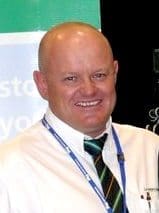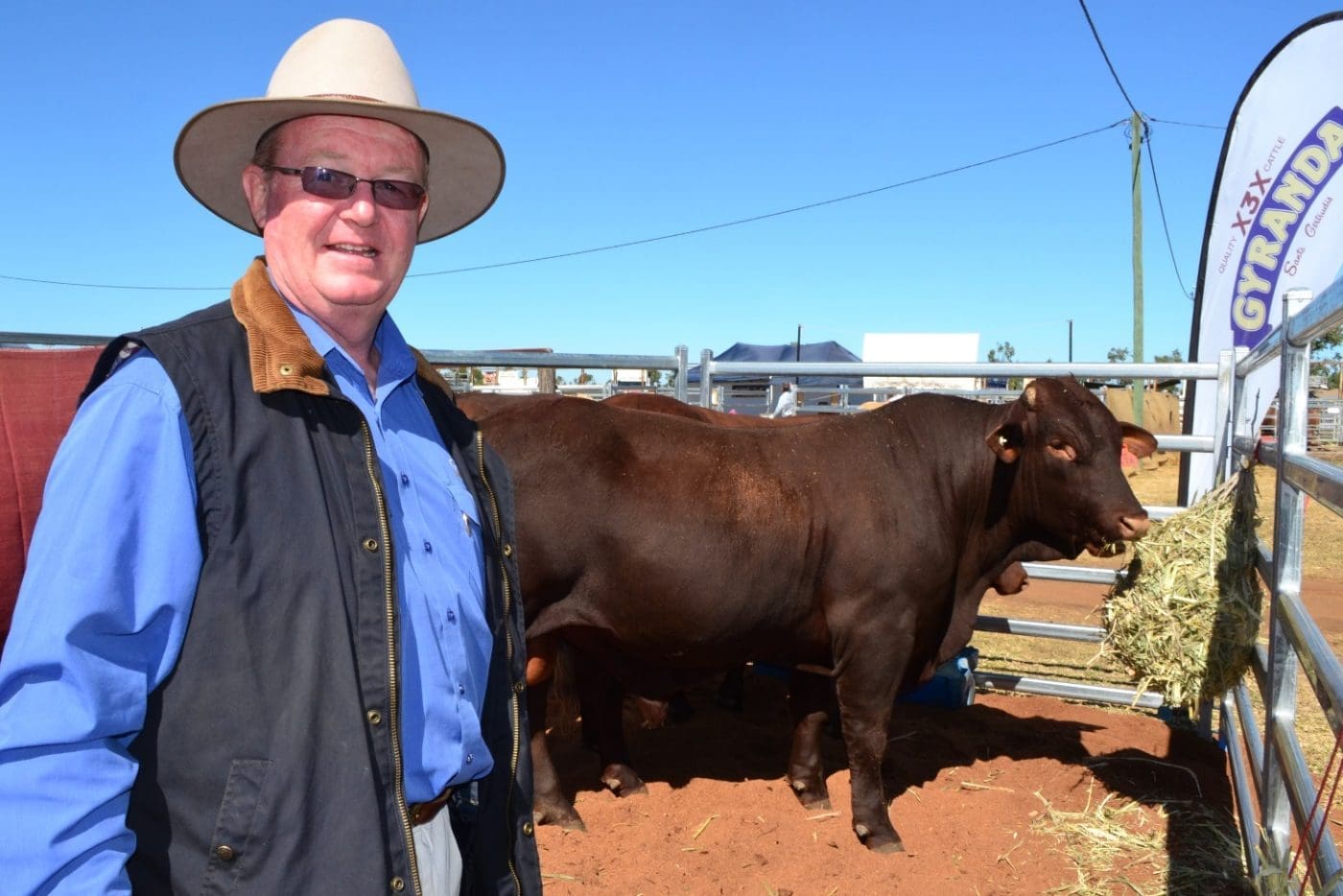
Rockhampton’s enormous Brahman Week bull sale, this year on October 3 to 5, has retained its reputation as the world’s largest multi-vendor bull sale, with the Australian Brahman Breeders’ Association’s website listing close to 900 grey and red bulls for sale in a frantic three days of selling.
Last year 875 bulls averaged $7396 for a gross of $6.5 million taking the number of bulls sold since the first sale in 1978 to more than 30,000.
Brahman Week has proven so popular among vendors, that entries need to be restricted.
ABBA’s long serving general manager John Croaker said a ‘market based’ criteria had been applied with the largest vendors allowed to enter 25 bulls, with smaller quotas for vendors with shorter histories selling at the event.
Back in its heyday, the sale was even larger however. In the days during the 1980s and 90s when it was not uncommon for large pastoral companies like Stanbroke, AA Co and Heytesbury to each amass 100 to 200 herd bulls at the sale, Brahman Week used to turn over up to 1500 bulls, across four days of selling.
Sale entries this year closed on April 1 with six months needed to process the data and produce a catalogue the size of a small phone book.
But that is only part of the Brahman spring bull selling season according to Mr Croaker, who has served at the ABBA for more than 30 years.
“Paddock sales account for around 75 percent of the Brahman bulls sold in the north and we estimate around 12,000 Brahman bulls are sold out of the paddock each year,” he told Genetics Central.
Industry observers estimate the paddock sales from southern bull producers would be more like 50pc, and often less, of their total sales.
Get in early, as demand and prices likely to rise as spring bull season progresses

John Settree
In the south, Landmark’s Dubbo NSW based stud stock representative John Settree is preparing for a busy sale-a-day spring bull schedule set to test any auctioneer’s vocal chords.
Mr Settree’s advice to local bull buyers this year is to get in early, as he expects demand to increase and prices to rise as the sales circuit builds momentum on the back of a great season and fantastic cattle prices.
“Strong demand for the right genetics and the right sort of animals,” is his prediction for trends this year.
However he said that many beef producers had suffered from a series of tough years and some could struggle to restock at the current prices.
Commercial females offer added attraction
The long-established strategy of selling pens of commercial females before or after a bull sale is working better than ever. The buyers may tend to stay on to bid on bulls and it is an opportunity to showcase what a seedstock producer’s particular genetics can produce in a commercial environment.
At the Grafton NSW multi-vendor Droughtmaster sale last week, a pen of seven straight-bred commercial cows with calves sold for $2600/head.
The prices for commercial females were even hotter at the Waratah Speckle Park sale at Guyra, NSW. While 37 bulls sold for an average $7300, F1 cows and calf outfits sold to $3750.
Waratah’s Laiton Turnham was pleasantly surprised at the sale result for the eight-year-old stud that also sold 28 stud Speckle Park females at an average of $5200 with 20 of those unjoined yearling heifers.
Agent puts some numbers on expected bull averages
Grant, Daniel and Long’s Dalby based stud stock specialist, Harvey Weyman-Jones has an optimistic view for the spring bull selling season in southern Queensland for 2016.

Harvey Weyman-Jones
He said the general cattle market had never been stronger and breeders have enjoyed 12 months of good prices for all types of cattle from weaners right through to cull cows and bulls.
“Our expectation is that typical bull sale average prices will rise to $6000-$8000 this year, up from perhaps $5500 to $6500 last year. That would mean the better quality, above-average bulls will be making around $10,000 or better,” he said.
“The easiest way to improve a cow herd is to buy better quality bulls with positive growth EBVs. If a buyer can increase the weight of their weaners by 30kg, sale price in the current market will increase by $90 to $120 per head, which is pretty much all profit.”
Mr Weyman-Jones said the quality of the bulls on offer this year is the best he had seen for many years.
“Due to the drought conditions over the past few years, there has been disciplined culling of stud cows and young bulls going on, which has resulted in an improvement of the type and structure of those remaining.”
“Stud breeders are generally breeding cattle with an emphasis on carcase, high weight gain, easy-doing cattle rather than the later maturing, larger framed bulls. This is a trend that is also evident in North America, from where much of our genetics are being sourced,” he said.



HAVE YOUR SAY